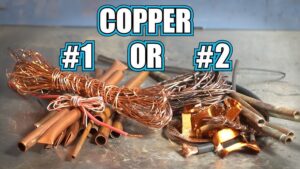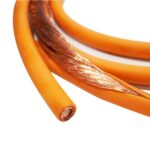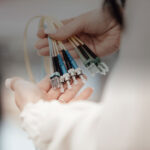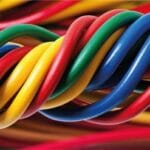Copper is one of the most valuable materials in the scrap industry due to its excellent conductivity and recyclability. However, not all copper scrap is created equal. Scrap copper is categorized into different grades based on its purity, appearance, and insulation type, which directly affects its market value.
In this article, we’ll explain the key copper scrap grades—especially #1 insulated copper wire and #2 insulated copper wire—so you can better understand how copper is valued in the recycling industry.

What’s the Difference Between #1 and #2 Insulated Copper Wire
1. What Is #1 Insulated Copper Wire?
#1 Insulated Copper Wire is considered high-grade scrap copper and is typically used in recycling markets that require clean, high-purity materials. This type of copper wire must meet the following conditions:
Made from clean, unalloyed, uncoated, and untinned copper
The copper inside should be bright and shiny
Wire must be at least 16 AWG in thickness
All connectors, plugs, and ends must be cut off
Insulation is allowed, but should be minimal and non-sticky
Common Sources:
Clean power cables
Stripped construction wire
Thick-gauge industrial wiring
✅ Value: High – Due to the high copper content and ease of processing
2. What Is #2 Insulated Copper Wire?
#2 Insulated Copper Wire is a lower-grade material often found in household items and electronic cords. While still recyclable, this type contains less copper or may have tarnished or oxidized wire inside.
Characteristics:
Contains unalloyed copper but may be tarnished or dirty
Thinner than 16 AWG in many cases
May include appliance cords, extension cords, telephone wire, and multistrand cables
Often has connectors or other attachments still in place
Insulation may be sticky, oily, or hard to remove
Common Sources:
Household extension cords
Phone charger cables
Appliance power cords
⚠️ Value: Moderate to Low – Lower copper yield, more labor-intensive to process
3. Why Does Copper Scrap Grade Matter?
Scrap yards and recyclers use these grades to determine how much copper can be recovered from the material. Higher-grade wire like #1 brings in a better price because it requires less processing and contains more copper by weight.
If you're in the copper trading, demolition, or recycling business, knowing the difference can help you:
Maximize your returns
Sort scrap more efficiently
Avoid disputes with buyers or suppliers
4. Other Common Copper Scrap Grades
| Grade | Description |
|---|---|
| Bare Bright Copper | Clean, uncoated, unalloyed copper wire—no insulation |
| #1 Copper | Clean copper with slight oxidation but no insulation |
| #2 Copper | Oxidized or painted copper, may include solder or residue |
| Copper Radiators | Found in HVAC systems, must be free of steel or plastic |
Conclusion
Whether you’re a contractor, recycler, or industrial buyer, understanding copper scrap grades like #1 insulated copper wire and #2 insulated copper wire is key to assessing value and quality. Always inspect your materials and sort properly before selling to ensure the best price.
Need Reliable Copper Wire for Your Projects?
At TOT Wire & Cable, we offer a full range of new copper wires and cables, including THW, THHN, and building wire products in various gauges. If you're sourcing high-quality copper cable, not scrap, contact us today for a competitive quote.





